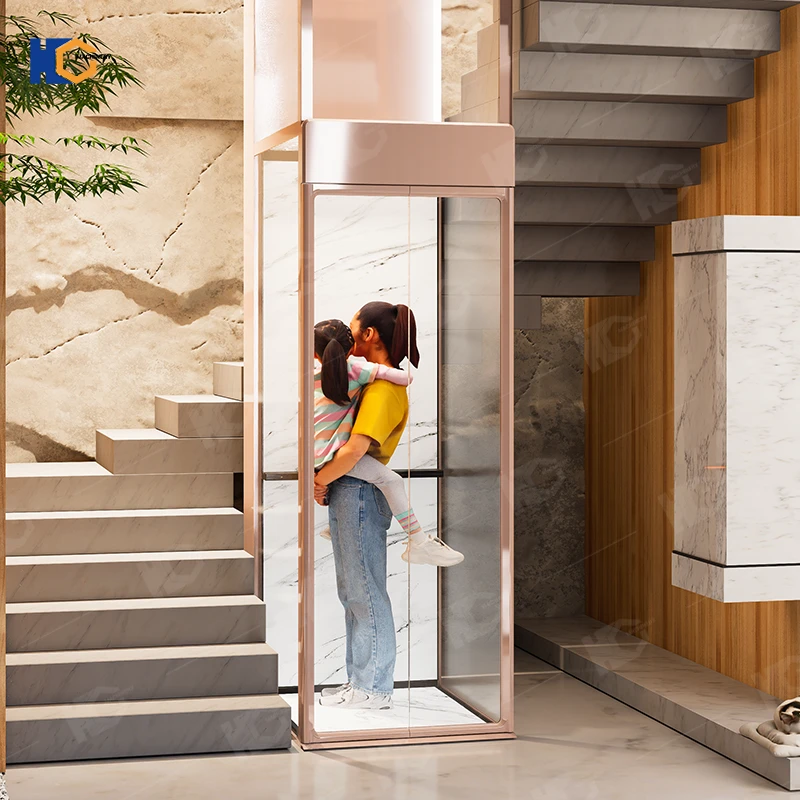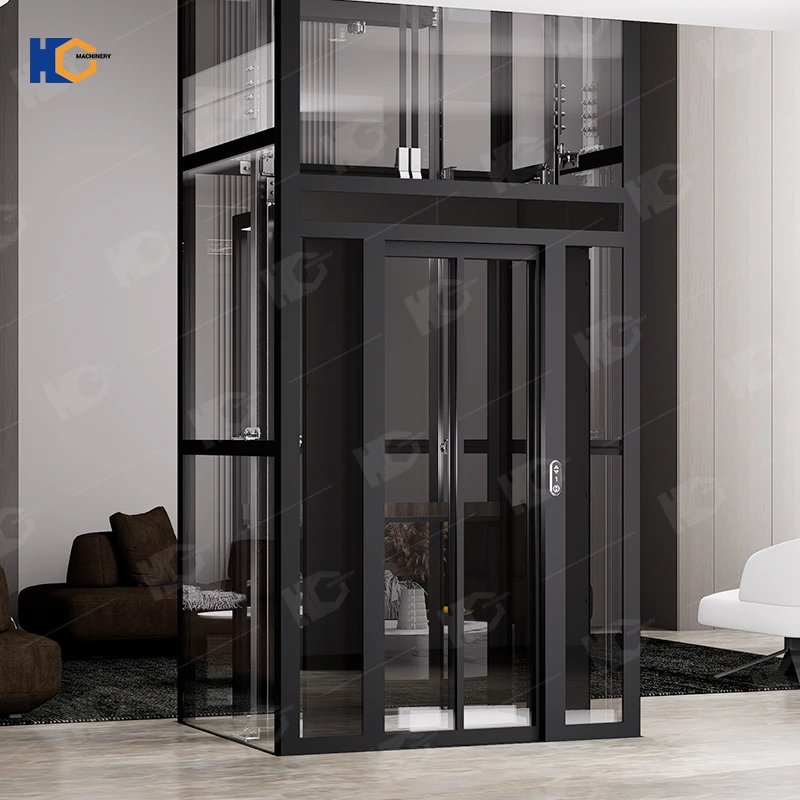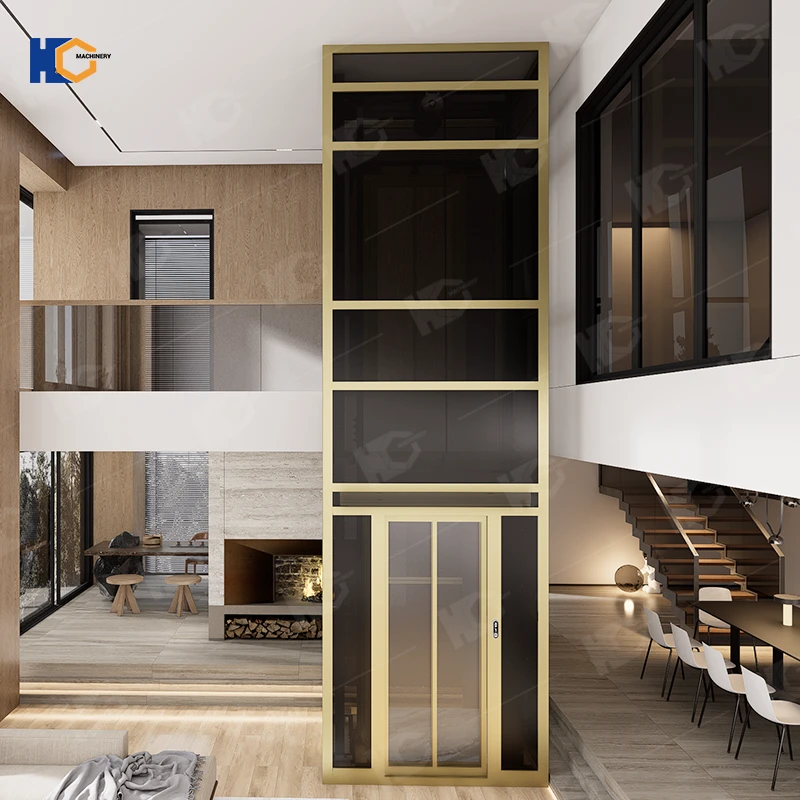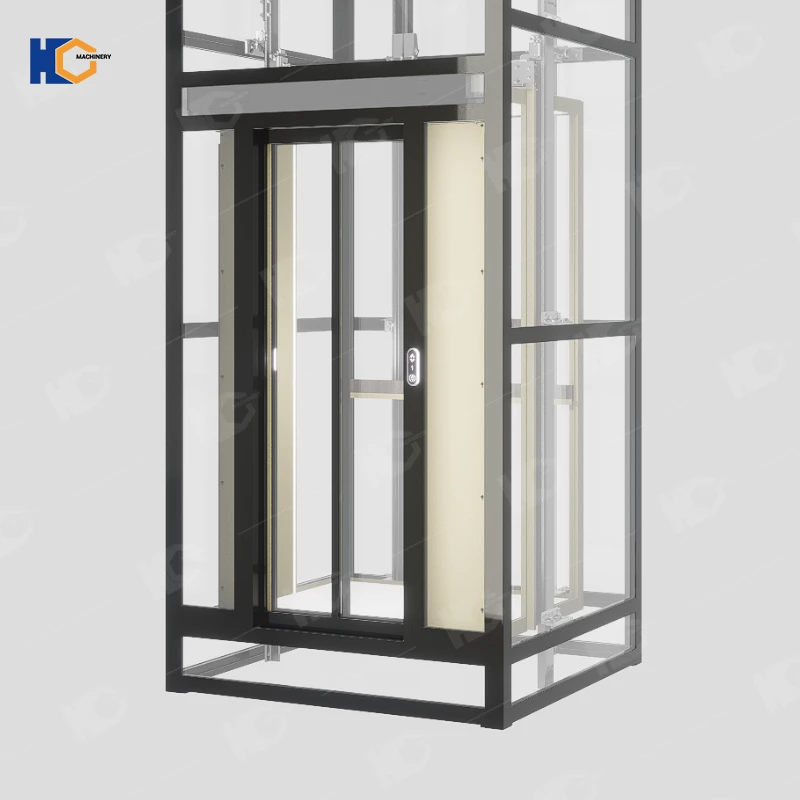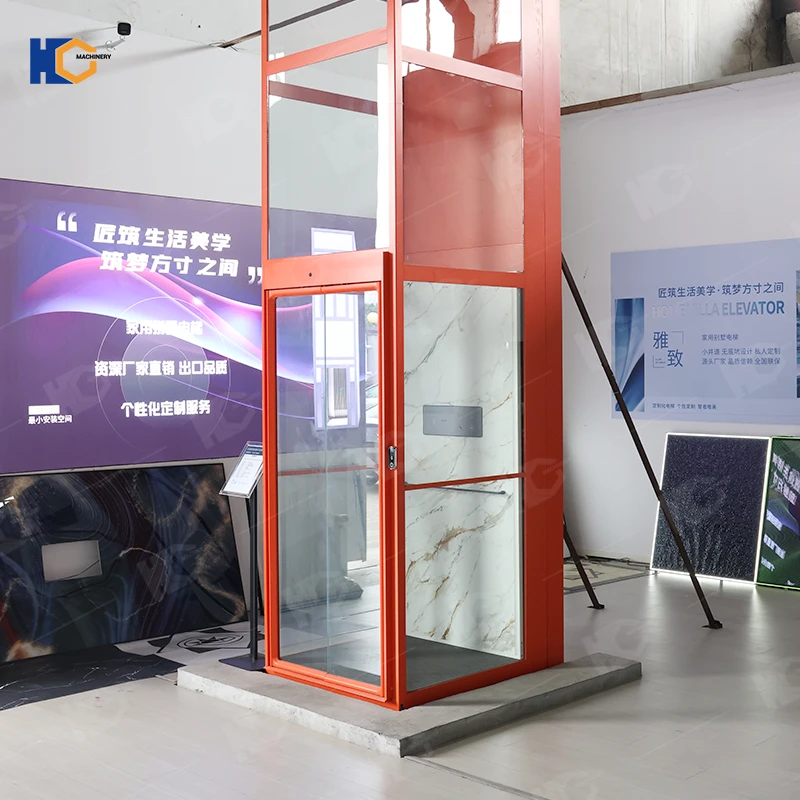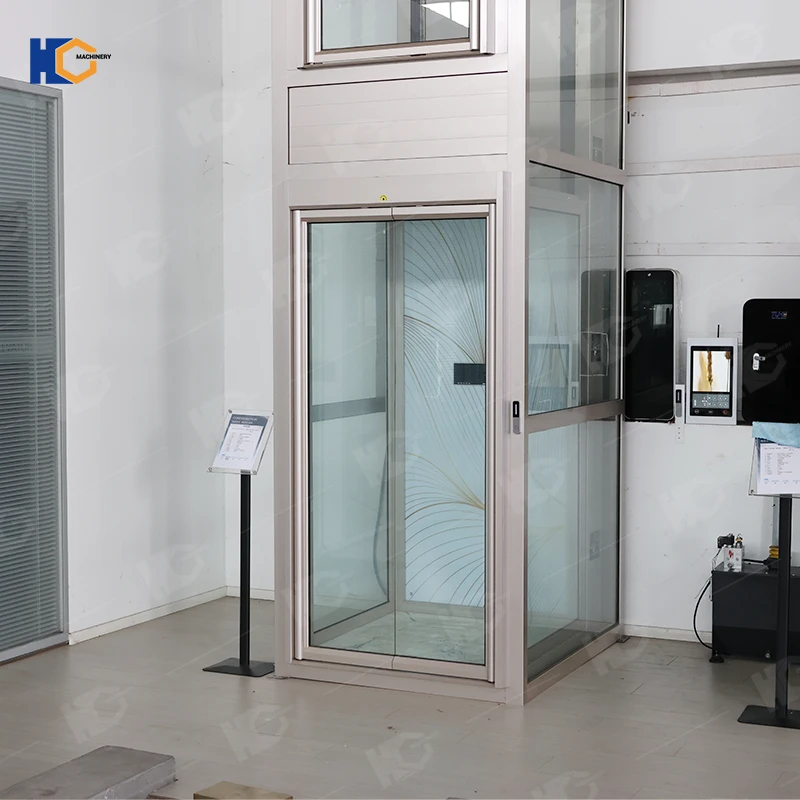The demand for small home elevators in Germany has been growing steadily as urban households, elderly care solutions, and barrier-free housing requirements continue to increase. Among different models, the small home 2-person elevator is one of the most practical solutions. Compact in size yet efficient in performance, this type of lift offers convenience, accessibility, and a modern touch to residential spaces.
This blog will give buyers and procurement managers a comprehensive guide to understanding the small home 2-person elevator price in Germany, covering technical features, installation requirements, market price ranges, customization, regulations, and procurement tips.
What Is a Small Home 2-Person Elevator?
A small home 2-person elevator is a compact vertical lift designed to transport two people within a residential building. Typically, it has a rated load of 200–300 kg, and a cabin size optimized for limited space. Unlike commercial lifts, it focuses on space-saving design, quiet operation, and energy efficiency.
Key features:
Compact cabin (fits 2 people comfortably)
Low pit or pitless design for easy installation in homes
Energy-efficient drive systems (hydraulic, traction, or screw-driven)
Modern safety systems (emergency stop, overload protection, auto rescue)
Customizable interiors to match home design
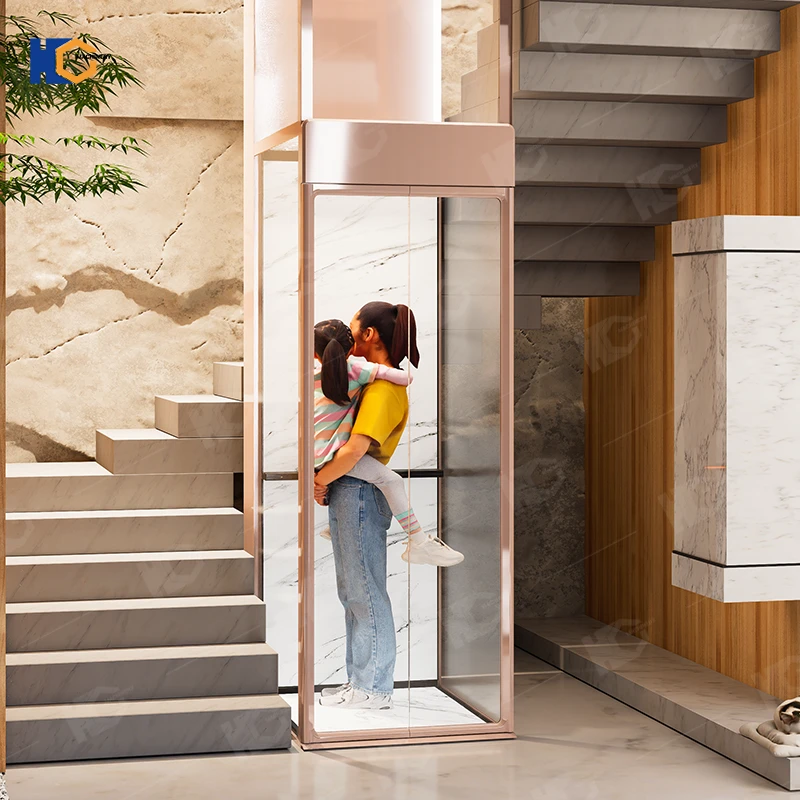
Benefits of Installing a Small Home 2-Person Elevator in Germany
Barrier-Free Living – Helps elderly or mobility-impaired residents move between floors safely.
Space Efficiency – Designed for small houses and duplex apartments.
Property Value Increase – A modern home elevator can boost property value.
Energy Savings – Many models consume as little power as a household appliance.
Customization – German buyers prefer elevators that integrate with home aesthetics, from minimalist to luxury interiors.
Technical Specifications of a Small Home 2-Person Elevator
Below is a sample specification table for buyers:
| Specification | Typical Range |
|---|---|
| Rated Load | 200–300 kg |
| Capacity | 2 persons |
| Cabin Size | 800 × 900 mm (customizable) |
| Speed | 0.15–0.3 m/s |
| Drive System | Hydraulic / Traction / Screw |
| Pit Depth | 150–300 mm (pitless options available) |
| Overhead Requirement | 2500–2800 mm |
| Power Supply | 220V/50Hz (household power) |
| Door Type | Manual / Automatic |
| Safety Features | Overload, emergency stop, phone, backup power |
| Control System | Microcomputer / PLC |
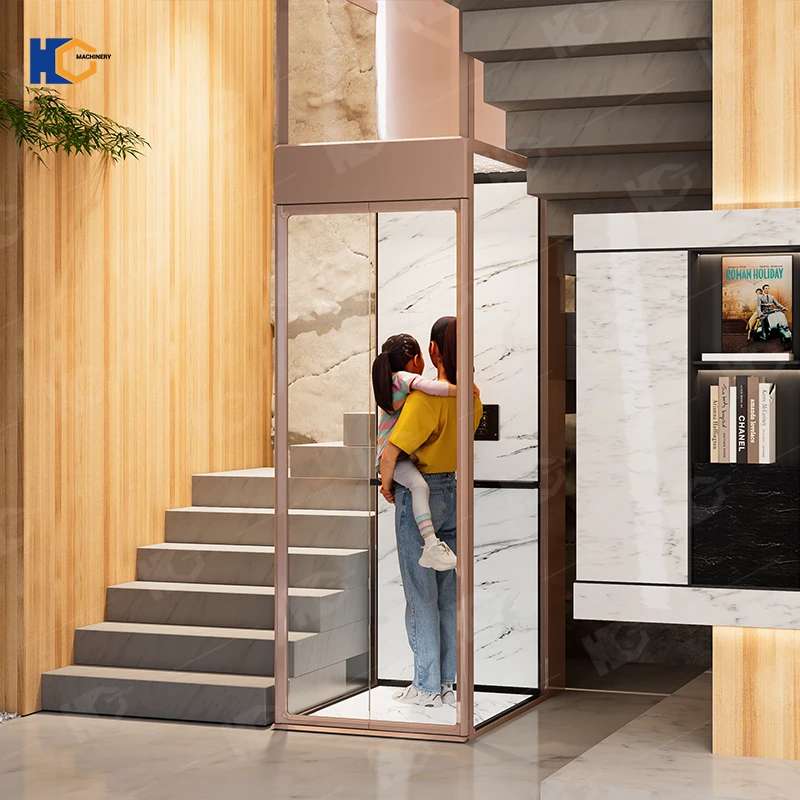
Price of Small Home 2-Person Elevators in Germany
The price of a small home 2-person elevator varies depending on the following factors:
Type of drive system (hydraulic is cheaper, traction and screw-driven cost more)
Customization (interior panels, doors, control system)
Import vs. Local installation costs
Number of stops (2–4 floors affects price)
Compliance with German safety standards (EN 81-41, Machinery Directive 2006/42/EC)
Price Range in Germany
Basic model (hydraulic, 2 stops, standard design): €16,000 – €20,000
Mid-range model (traction, glass cabin, 2–3 stops): €22,000 – €28,000
Premium model (screw-driven, luxury design, multiple customizations): €30,000 – €45,000
Additional Costs
Installation fee: €4,000 – €8,000
Annual maintenance: €500 – €1,200
German TÜV safety inspection: €500 – €1,000
Cost Comparison: Germany vs. China Imports
Many procurement buyers consider importing from Chinese manufacturers due to competitive pricing.
| Origin | Price (Ex-Factory) | Price in Germany after Import |
|---|---|---|
| China Factory | $10,000 – $15,000 | €18,000 – €22,000 (after shipping, customs, installation) |
| German Brand | €22,000 – €35,000 | Direct purchase, faster service |
Tip: Buyers in Germany often import cabins and control systems from China, then complete installation with local certified companies to comply with German regulations.
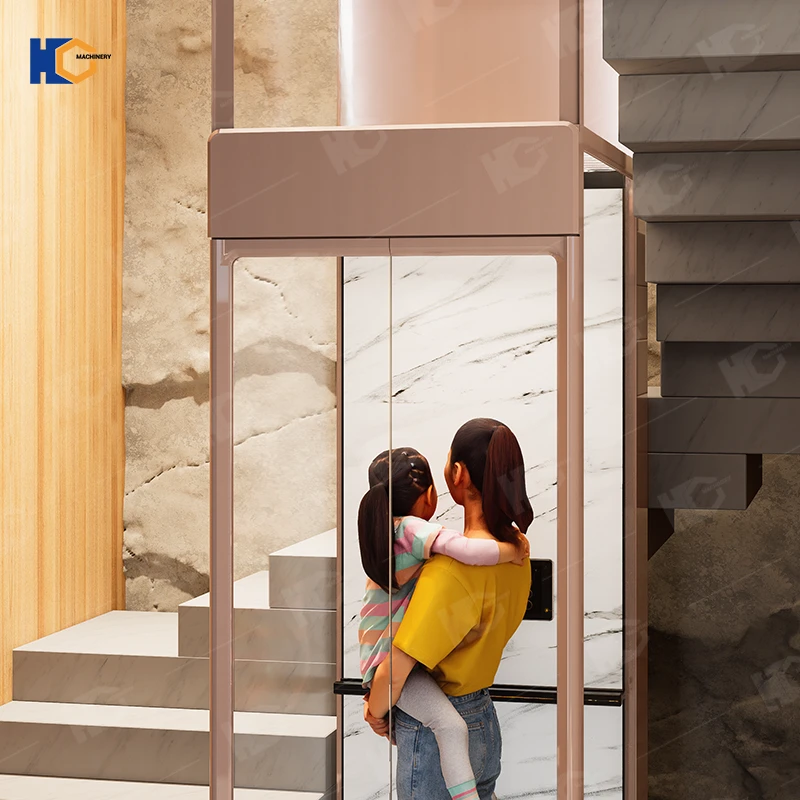
Regulations for Small Home Elevators in Germany
To ensure compliance, elevators must meet:
EN 81-41: Safety rules for vertical lifting platforms.
EN 81-20 & EN 81-50: Design and safety rules for passenger lifts.
Machinery Directive 2006/42/EC (for certain platform lifts).
TÜV Rheinland or DEKRA inspection before operation.
Failure to comply can result in installation bans, fines, or voided insurance claims. Procurement buyers should always verify CE certification and German conformity.
Customization Options for Buyers
German homeowners and architects often request customization, such as:
Cabin Interior: Stainless steel, wood veneer, glass panels.
Doors: Swing doors, automatic telescopic doors.
Controls: Touchscreen, smart home integration.
Design: Panoramic glass shaft for luxury villas.
Customization can add €3,000–€10,000 depending on the complexity.
Installation Requirements in German Homes
Space: Minimum shaft size 1000 × 1000 mm.
Pit Depth: 150–300 mm (pitless models available).
Overhead Space: At least 2500 mm.
Power Supply: 220V household line.
Noise Level: ≤ 55 dB (important for residential comfort).
Most installations take 4–6 weeks after order confirmation.
How to Choose a Reliable Supplier
Check Certification – CE, EN standards, TÜV approval.
Ask for Case Studies – Real installations in Europe.
Compare Warranty – At least 1–2 years full warranty.
Check After-Sales Service – German-speaking service support is critical.
Evaluate Price vs. Value – The cheapest option may lack long-term service reliability.

Procurement Tips for Buyers in Germany
Always request FOB and CIF pricing from suppliers.
Factor in customs duty (approx. 2.2%) and VAT (19%) when importing.
Use local German installers familiar with regulations.
For bulk procurement (developers, contractors), negotiate factory-direct discounts.
Confirm delivery time: standard lead time is 30–45 days from China.
Maintenance & Operating Costs
Long-term cost matters for procurement decisions.
Annual service contract: €500–€1,200
Electricity cost: Around €100–€150 per year
Spare parts: €200–€500 annually (after 5 years of use)
Expected lifespan: 20–25 years with proper maintenance
FAQ – Small Home 2-Person Elevator for Germany
Q1: What is the minimum space required for a 2-person home elevator?
A: Typically 1000 × 1000 mm shaft space.
Q2: Can it run on household electricity?
A: Yes, most models run on 220V/50Hz.
Q3: Is TÜV certification mandatory in Germany?
A: Yes, all home elevators must pass TÜV or similar inspection before use.
Q4: What is the delivery time if imported from China?
A: Around 30–45 days shipping + 2 weeks customs clearance.
Q5: Do German homeowners get government subsidies for home elevators?
A: Yes, in some cases under barrier-free housing programs (KfW bank loans or grants).
Q6: Can a small home 2-person elevator be installed in old houses?
A: Yes, pitless and shaftless models are suitable for renovations.
Conclusion
The small home 2-person elevator is an ideal solution for German households seeking comfort, accessibility, and modern living. Prices range from €16,000 to €45,000 depending on the model, customization, and installation. Procurement buyers should consider compliance, certification, supplier reputation, and after-sales service before making a purchase.
Whether sourcing from German suppliers or importing from China, careful planning ensures cost efficiency and long-term safety compliance. With rising demand for barrier-free living, the small home 2-person elevator is set to become an essential part of modern German homes.
